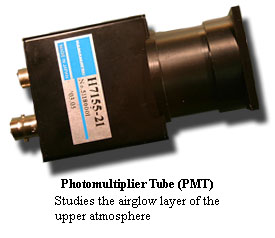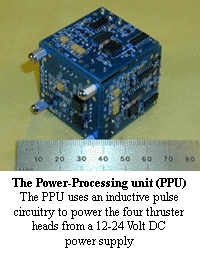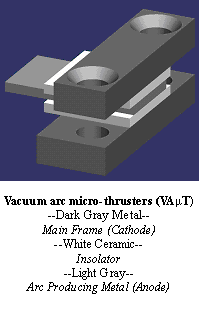Overview
The main payload of ION includes two optical sensors: a Photomultiplier Tube
(PMT) and a CMOS camera. The PMT will carry out the scientific mission of the
spacecraft, while the CMOS camera conducts a technology mission. The scientific
mission is to study the oxygen airglow emissions in the upper atmosphere. This layer is
located about 100 km above the Earth's surface. The airglow phenomenon is caused
by atomic-oxygen driven chemistry that emits a wavelength of light at ~763 nm.
Since this wavelength is absorbed by the lower atmosphere, it cannot be studied
from Earth based sensors. Using the PMT, ION will be studying this phenomenon
from low Earth orbit. Wave-like structures ranging from 20 to 200 km in length
are created in this layer by atmospheric winds. The data from the PMT will be
valuable in studying these structures.
Photomultiplier Tube Sensor (PMT)
The
PMT will be operated only during the night-phase of the orbit, due to its high
sensitivity to light. PMT operation times will be determined on the ground and
uploaded periodically. There is also a backup shutdown circuit which will
cut off power to the PMT if the spacecraft is in sunlight. Due to attitude
control requirements, the PMT will not be scheduled to operate while the
thrusters spin-up the spacecraft. Once the attitude is stabilized, the PMT will be scheduled
to return to normal operation.
Complimentary Metal-oxide Semiconductor (CMOS) Imaging System The CMOS camera is just like your standard digital camera. The difference is that ION's camera is much lower quality and only black-and-white. ION's camera resolution is 640x480 pixels, which is 0.3 Megapixels.
Propulsion System
The ION thruster head design is a linear sandwich geometry (BLT), which means the electrodes are separated by a ceramic insulator. During operation, an arc is produced between the two electrodes, eroding the cathode. The metal from the cathode is ionized and accelerated, producing a very small impulse. The thrusters must have a few angstroms thick conductive layer on the surface between the two electrodes. This conductive layer facilitates the initial arc breakdown. The resistance between the two electrodes due to the conductive layer should be on the order of 50 kW. The conductive layer is applied to the thruster head by using a pulse forming network (PFN). Exactly how this layer is applied is explained later in this report. Mounted on the outside of ION, near the thrustersí heads, flush with the surface of the spacecraft is the conductive deposition monitor (CDM). It consists of two metal tabs mounted on a 1cm2 ceramic wafer, separated by a small distance. Normally, there is an open circuit between them. As the thrusters fire, material may be deposited back onto the spacecraft body. As this material deposits on the CDM, it will lower the resistance between the two tabs. A measurement of the resistance between the tabs is to be used as an indicator of the amount of material depositing back on the spacecraft. |
|||||||||||



 The Structural team is responsible for the propulsion subsystem.
It's main mission is to space qualify the vacuum arc micro-thruster
propulsion system provided by Alameda Applied Sciences Corp (AASC). Vacuum
arc micro-thrusters (VAmT) are small, pulsed electric thrusters,
designed for attitude control of small satellites, and possibly used as the main propulsion
of micro-satellites. VAmTs operate at pulse frequencies ranging from less than
one Hz to approximately 100 Hz and consist of a thruster head and power-processing
unit (PPU).
The Structural team is responsible for the propulsion subsystem.
It's main mission is to space qualify the vacuum arc micro-thruster
propulsion system provided by Alameda Applied Sciences Corp (AASC). Vacuum
arc micro-thrusters (VAmT) are small, pulsed electric thrusters,
designed for attitude control of small satellites, and possibly used as the main propulsion
of micro-satellites. VAmTs operate at pulse frequencies ranging from less than
one Hz to approximately 100 Hz and consist of a thruster head and power-processing
unit (PPU).
 BLT Sandwiches
BLT Sandwiches